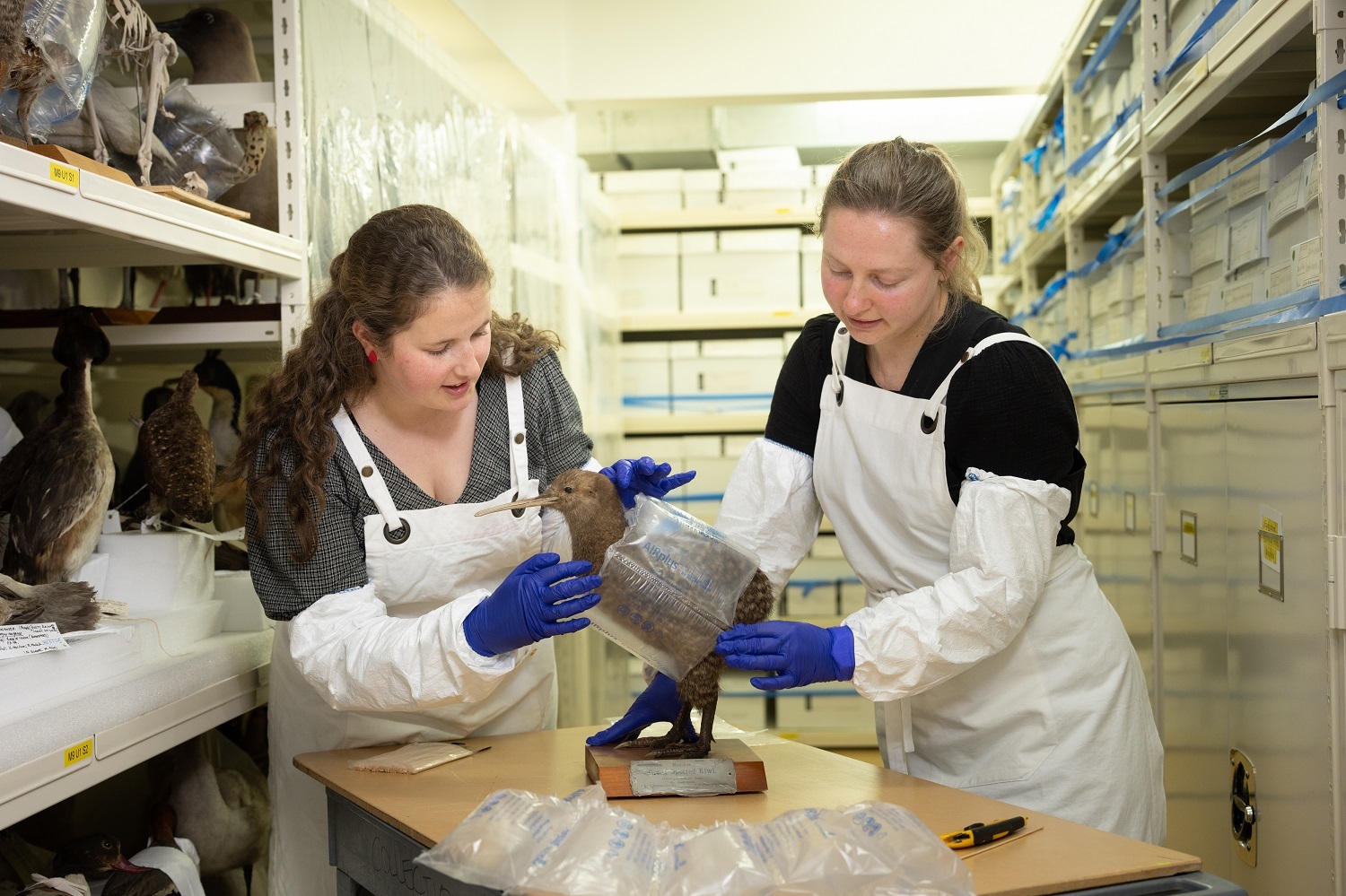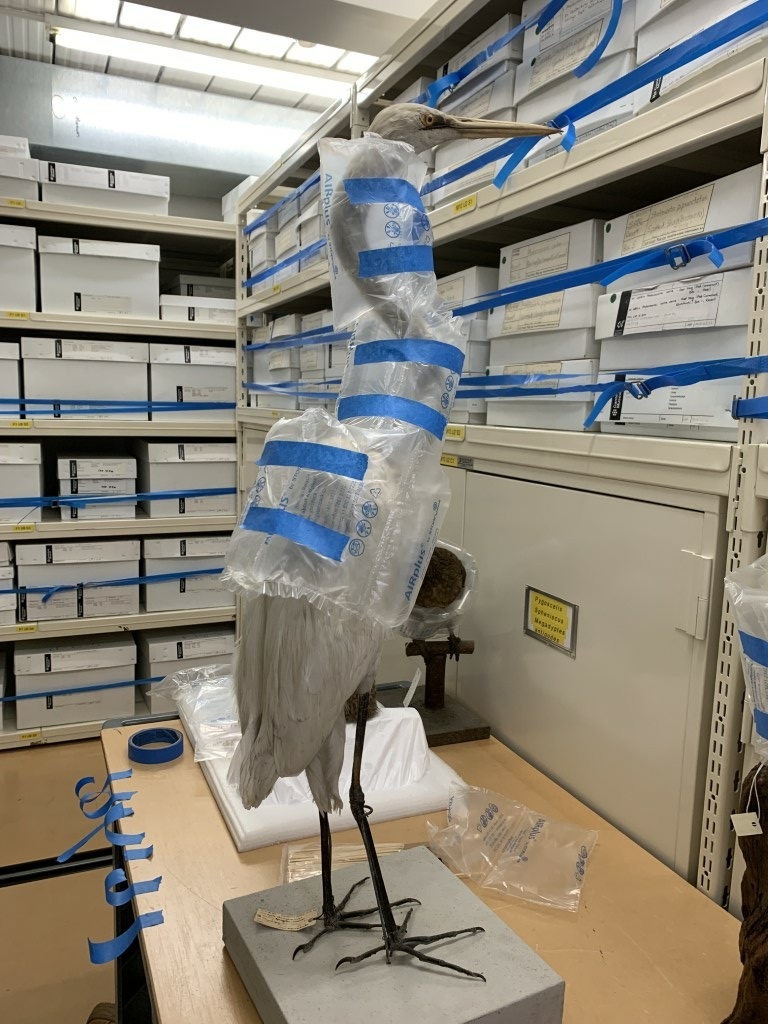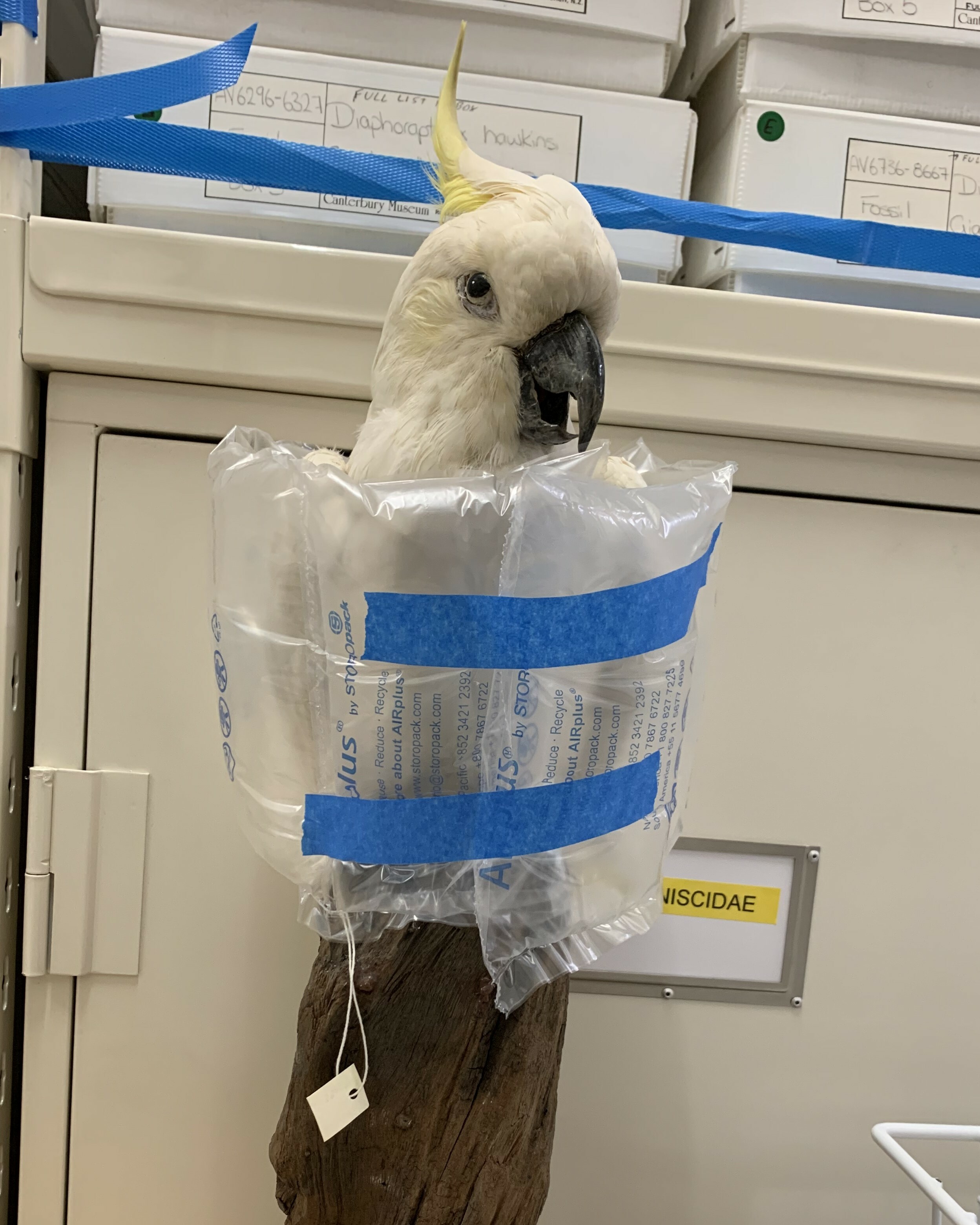Have you ever seen a bird wearing a life jacket? Neither had we – until we started preparing the Museum’s Vertebrate Store for the Museum move.
Ok, these aren’t technically life jackets. There’s no chance of our bird specimens falling overboard into the Ōtakaro (Avon River) on their way out of the Museum.
But these little plastic pockets of air are crucial to ensuring our birds (and other taxidermied specimens) arrive at the Museum’s temporary storage facility without a feather out of place.

The Vertebrate Store – usually referred to around here as the “Vert Store” – is where we keep most of our taxidermied animals and animal bones.
With birds dominating the native fauna of Aotearoa New Zealand, most of the specimens down here are of the avian variety.
We have two kinds of taxidermied bird in the Vert Store: mounts, which is when the bird is stuffed in a lifelike pose, generally for display, and skins, where the bird is preserved in a sausage shape for researchers to study.

Most of the skins are stored in drawers, which makes transporting them off site relatively easy; we just need to ensure they aren’t sliding around.
The mounts are harder to transport and it’s generally these that need the life jackets. We have over 2,100 mounts in the Vert Store (and over 3,500 skins) and while they don’t all need protecting, we have made a lot of life jackets lately!
We make our air pillows with an air cushion machine, which fills the strips of plastic bags with air and seals them up. A belt of air pockets is then wrapped around the bird that needs protection.
Usually, we just need to cushion the bird’s body, but in the case of birds with long, elegant necks, a little extra protection around these delicate areas is important too.

The air inside the life jackets provides a buffer against impacts that might damage our specimens. They also prevent them rubbing against the side of their boxes, or each other, which can cause feathers to fall out.
The air pillows are made of polyethylene, which is a collections-safe and recyclable plastic.
Even though many of these birds haven’t been on display in a long time, they have been used for research by scientists in Aotearoa and around the world, so it’s really important that they – like the rest of our taonga – come through the move unscathed. Some might even be displayed in the new Museum!

Ashley Boot is Collections Inventory Lead Technician
Julia Nicholls is Collections Inventory Cataloguing Technician





